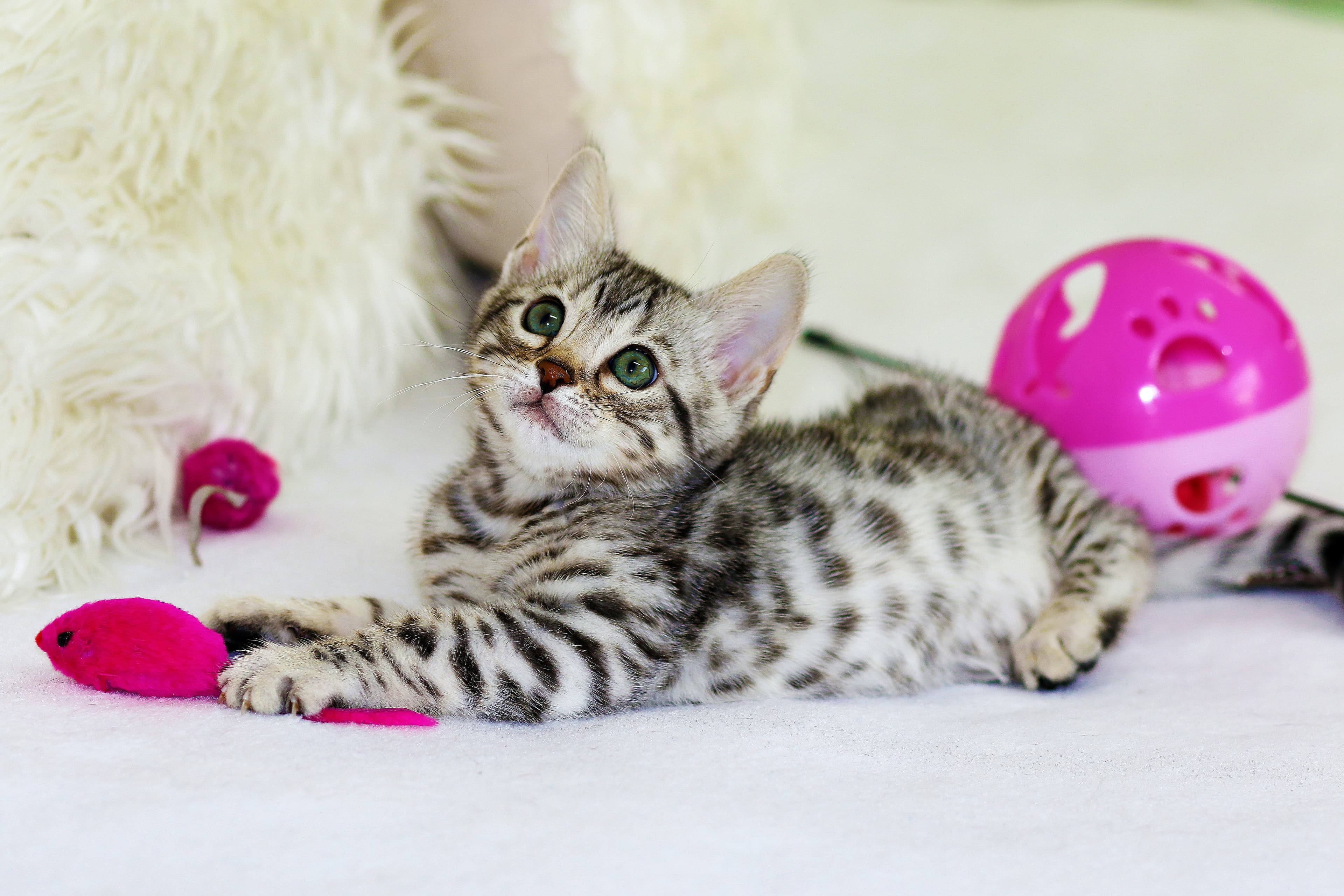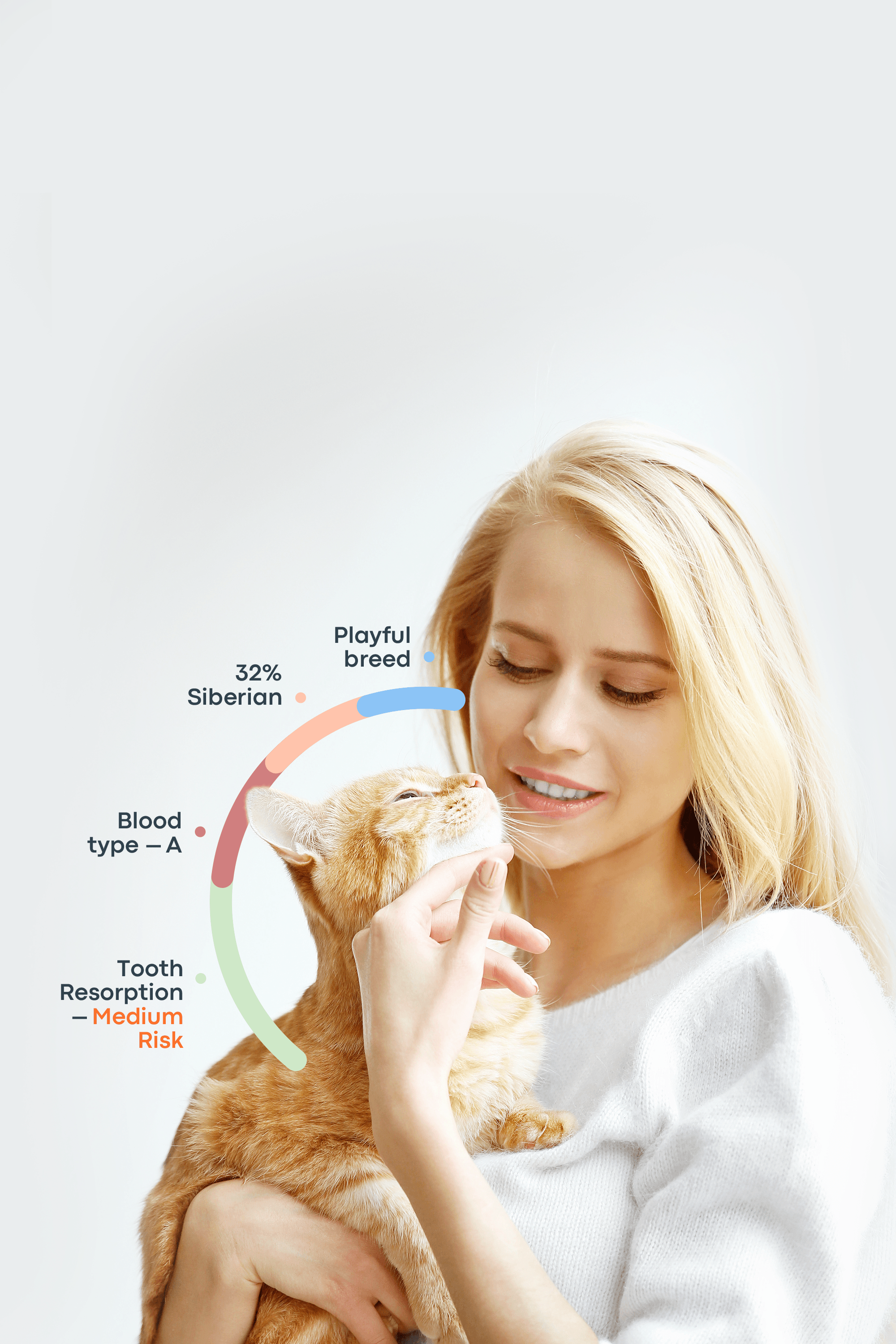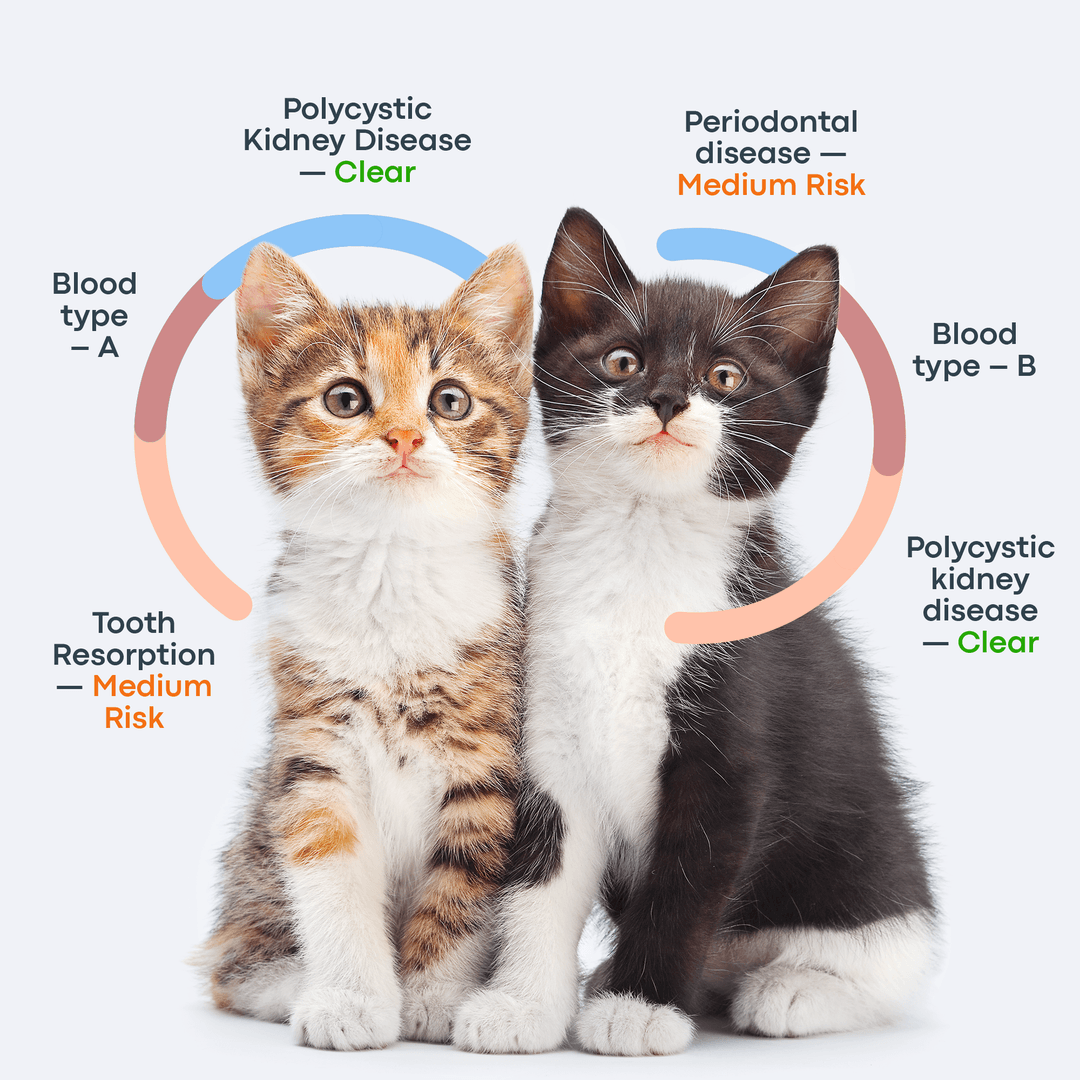Cats, wild hunters, aloof observers, or snuggle bugs who act like our shadows. Whatever form your feline friend takes, their health and well-being can take up a lot of your thoughts. One easy (and fun!) way to look after them can be through play. But you might not know how to play with cats. Take this as your guide on how to play with your cat and fun things to do with your cat!
Why Playing with Your Cat Matters
Play isn’t just about burning off energy—it plays a vital role in your cat’s physical health, mental stimulation, and emotional bond with you. From preventing obesity to reducing boredom and anxiety, interactive play helps your cat live a happier, healthier life.
The Benefits of Cat Play
When cats are unable to express their natural instincts—like hunting, pouncing, and chasing—they may develop destructive habits, often taking out their frustration on your furniture! This is especially true for indoor cats, who rely on their human companions for stimulation and enrichment.
Regular play sessions offer several benefits:
Redirects unwanted behavior like scratching or biting
Helps maintain a healthy weight through physical activity
Boosts your bond by increasing trust and affection
Reduces boredom and stress, keeping your cat mentally sharp and emotionally balanced
In short, play is more than entertainment—it’s an essential part of your cat’s well-being.

How to Play with Your Cat the Right Way
How to play with a cat depends on their individual personality and “hunting style.” Some cats love fast chases, while others prefer stalking and pouncing. Observing how your cat interacts with their environment can help you tailor the play experience to their preferences.
What Do Cats Play With?
Balls are great for cats that enjoy short chases, and you can even teach them to play fetch. Wands suit cats that prefer sneaking up on prey and can help redirect them from off-limits surfaces. Electronic toys add unpredictability, while catnip toys cater to catnip lovers. Starting with a DIY toy can be a good way to test your cat's preferences before investing in pricier options.
Toy Type | Safe? | Notes |
Wand toys (feathers, strings) | With supervision | Excellent for interactive play. Always put away after use to avoid tangling or choking. |
Laser pointers | With caution | Great for cardio. Can cause frustration if there’s nothing to “catch”. End sessions with a physical toy or treat to satisfy the prey cycle. |
Catnip mice/soft toys | Yes | Safe for solo play. Rotate regularly to keep interest high. |
Balls (crinkle, jingle, ping-pong) | Yes | Encourage chase and batting. Monitor for loose parts. |
Puzzle feeders/treat toys | Yes | Mentally enriching. Ideal for solo activity and slow feeding. |
Yarn, string, or ribbon (unsupervised) | Dangerous | Can be swallowed, causing choking or intestinal blockages. Only use under close supervision. |
Hands/fingers | Bad habit | May encourage biting and aggression. Use toys instead of bare hands. |
Hair ties, runner bands | Choking hazard | Easily swallowed; can cause serious digestive issues. |
Toys with small detachable parts | Risky | Pieces can break off and be ingested. Inspect toys regularly. |
Do Cats Like Squeaky Toys?
Squeaky toys can be a fun experiment. Some cats are intrigued by the sound, while others may find it startling or annoying. If you're curious to see how your cat reacts, start slowly—and always supervise their play. Be sure the squeaky toy is specifically designed for cats to avoid any choking hazards or harmful materials.
How to Play with Your Cat Without Toys
There are lots of things to do with your cat without expensive toys; many everyday items can become exciting toys:
Cardboard boxes
Paper bags (handles removed for safety)
Crinkled paper balls
Your voice and movement
Shadow play using a flashlight or your hand
Always supervise your cat during these play sessions to prevent injury or overstimulation. Sometimes the simplest play is the most engaging!
How to Play with Your Cat With Your Hands (and Why to Be Cautious)
Your hands may seem like tempting toys, but using them directly in play can encourage biting and scratching—behaviors that can be hard to undo later. Cats may start seeing hands as prey, which is dangerous for you and confusing for them.
If you do use your hands, wear a glove or use a soft barrier, and always have a toy nearby to redirect their attention. When in doubt, don’t play with your hands; play with cat toys.
The Hunt Cycle
A cat playing with toys can feel like their hunt cycle. When a pet plays, they’re not just having fun—they’re reenacting their natural hunt cycle, which includes:
Stalking
Chasing
Pouncing
Catching
“Killing”
Resting or “eating”
This sequence is deeply satisfying to your cat because it mimics the behaviors of wild hunting. Letting your cat complete this cycle during play can lead to better behavior, improved mood, and even deeper sleep. A satisfied hunter is a happy house cat!
Fun Things to Do With Your Cat
Hunting Games and Prey Simulation
One of the most effective ways to entertain your cat is by playing hunting games that simulate their natural prey instincts. The key is to move toys in a way that mimics how real prey would behave. A wand toy can slither like a snake, while a rolling ball can mimic the scurry of a small animal. Varying your movements and giving your cat a chance to stalk and pounce can make playtime much more satisfying.
Puzzle Toys and Brain Games
Cats are also incredibly intelligent and curious, which makes puzzle toys and brain games a great option. Whether it’s a food-dispensing toy, a snuffle mat, or a homemade puzzle, like a toilet paper roll stuffed with tissues and treats, these activities encourage problem-solving and reward your cat’s curiosity. Watching them figure out how to “unlock” their prize is both entertaining and mentally enriching.
Create an Indoor Obstacle Course
If you’re looking to mix up your cat’s routine, consider creating an indoor obstacle course. You can use furniture, cat trees, tunnels, or even blankets to craft a fun space for exploration. Guiding your cat through the course with treats or toys can turn a normal afternoon into a mini-adventure. Just be sure to supervise your cat during these activities to ensure their safety while they explore and play.
Play Safety Tips
Play With Your Cat at the Right Time
Start by choosing the right time of day. Cats are crepuscular, meaning they’re naturally most active during the early morning and evening hours. Scheduling play during these times helps release their energy when they're most alert and sets them up for a calm, restful period afterward.
Ideal Frequency and Session Length
Consistency also matters. Playing with your cat for about five to fifteen minutes once or twice a day is usually enough to keep them happy and healthy. It’s better to maintain a regular routine than to go all out once in a while—short, frequent sessions help build your cat’s confidence and strengthen their connection with you.
Rotating Toys and Keeping Things Fresh
To keep things exciting, rotate your cat’s toys every few days. Cats can lose interest quickly, especially if a toy smells too familiar or looks too predictable. Giving toys a break allows their scent to fade, making them feel new and interesting again when reintroduced.
Engage All Senses
When selecting toys, try to engage all of your cat’s senses—not just sight. Toys that crinkle, smell interesting, or move unpredictably can be especially helpful for shy or older cats who need a little encouragement to play. Playtime should feel like a full-bodied experience, mimicking the way cats naturally hunt.
Signs your cat is done playing
To avoid cat overstimulation and humans getting bitten, keep an eye out for these signs:
Tail twitching
Dilated pupils
Suddenly swatting
Retreating
Hissing
Flat ears
Give your cat a break and let them transition into eating, resting, or petting. Forcing them to continue to play, they will continue to get overstimulated, leading them to lash out. You need to build positive memories around play.
Supervised vs Unsupervised Play
Finally, consider whether playtime should be supervised. Some toys, like balls or soft plushies, are safe for solo play. Others—like wand toys with strings, or lasers—should only be used when you're there to monitor. After any play session, check the toys for wear and tear. Loose strings, broken parts, or frayed fabric can all pose a hazard if left unattended.
Playtime by Personality and Age
Every cat is different, and tailoring play to match your cat’s personality and age can make all the difference in how enjoyable—and beneficial—those sessions are.
How to Play with My Cat if They’re Shy or Anxious
If your cat is shy or anxious, approach playtime with patience and sensitivity. These cats often need more time to feel safe, so use gentle movements and keep your voice soft and calm. It's also important to give them control of the interaction. Having nearby hiding spots allows your cat to retreat when they feel overwhelmed, which can actually encourage them to venture out again on their own terms. Solo toys like soft balls or puzzle feeders can help anxious cats engage without pressure. As trust builds, you can introduce slow-moving wand toys or interactive play that respects their pace and comfort level.
Kittens vs Senior Cats
As cats age, they need slightly different play styles.
Age group | Play style | Session length | Recommended toys |
Kittens (0-6 mo) | High energy bursts | 5-10 min, 3-5x/day | Wand toys, crinkle balls |
Adults (1-7 yrs) | Structured, engaging | 10-15 min, 1-2x/day | Puzzle toys, laser pointers |
Seniors (7+ yrs) | Gentle stimulation | 5-10min/day | Feathers, slow-moving toys |
Conclusion
Play is essential for a cat’s well-being, no matter their age or personality. It keeps them mentally sharp, physically active, and emotionally content. By taking the time to understand your cat’s unique preferences and energy levels, you can turn playtime into a meaningful part of their daily routine. Whether you’re using a wand toy, a cardboard box, or a puzzle feeder, the most important thing is finding what brings your cat joy. Hopefully, you now have the answer to “How to play with my cat”!
Frequently Asked Questions
How to play with an adult cat that has never played before?
Introduce toys gradually and keep to short and positive interactions.
What are some creative ways you play with your cat?
DIY toys and obstacle courses can be fun ways to play at home!
How do I know when cat wants to play?
Energetic behavior and playful body language are the most obvious signs. Some cats may bring you their toys.
How can you get your cat to play more?
Focus on engaging their natural predatory instincts and offering a variety of toy options.
How to play with the cat without getting scratched?
Don’t let your cat play with your bare hands and stop when they seem overstimulated.
How can I play with my indoor cat?
You can engage your indoor cat by using interactive toys like wand toys, laser pointers, or even DIY toys made from household items and by setting up play areas like cardboard box playgrounds.
How do you play effectively with a cat?
To play effectively with a cat, observe their preferences and energy levels, use toys that mimic prey behavior, and ensure the play sessions are interactive and engaging.
What not to do when playing with a cat?
Avoid using your bare hands as toys to prevent accidental scratching or biting, and never force a cat to play if they show signs of disinterest or agitation.
How long should I play with my cat?
Typically, play sessions should last around 10-15 minutes, but it's important to observe your cat's interest and energy levels and adjust the duration accordingly.
Reference List
https://www.petmd.com/cat/general-health/what-is-catnip
https://www.pdsa.org.uk/what-we-do/blog/homemade-toys-for-cats
https://www.petmd.com/cat/general-health/are-cats-nocturnal



